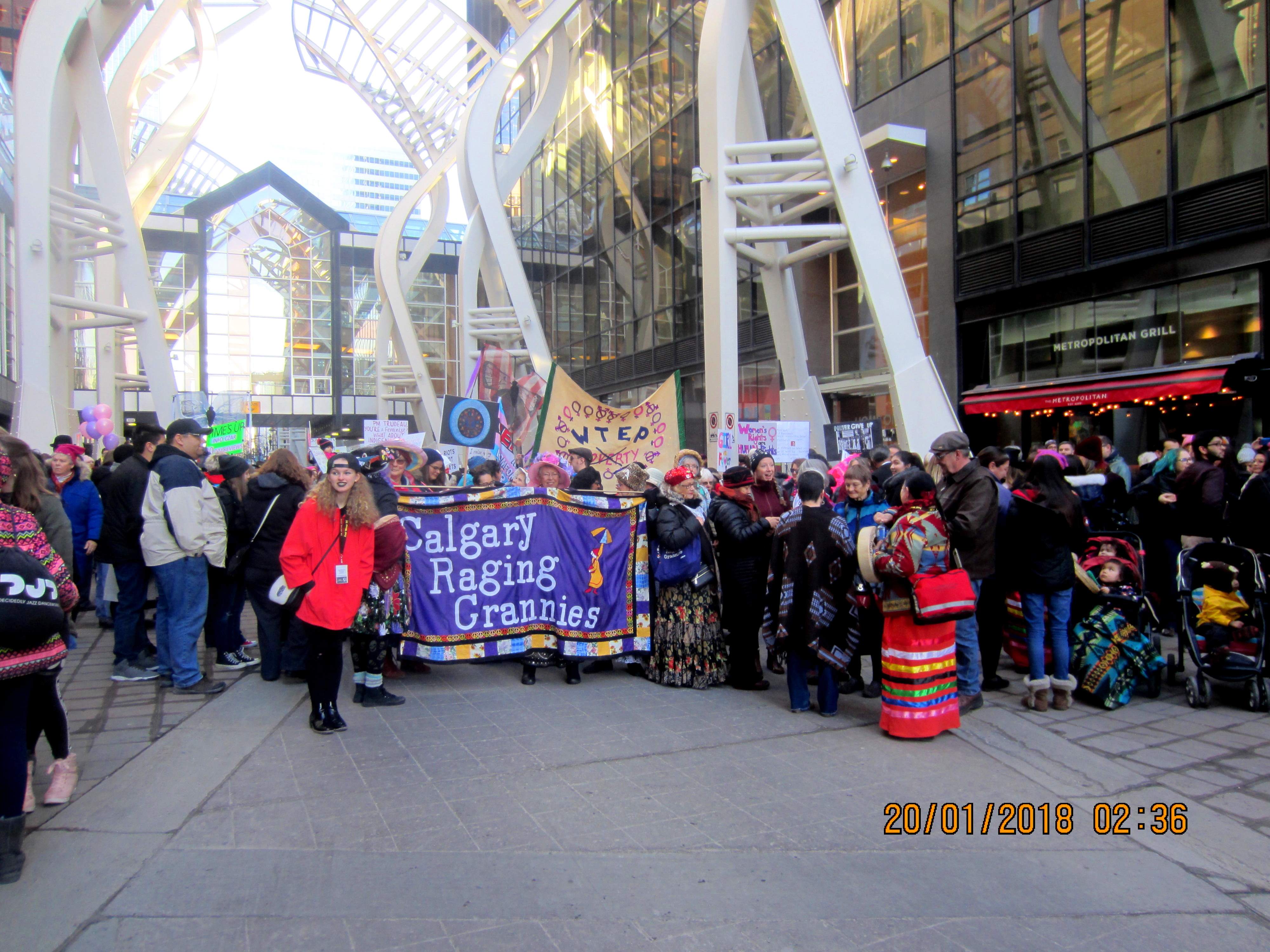The 2017 Women’s March in Washington, D.C. was probably the largest demonstration in U.S. history, with a total of four million marchers, including parallel marches in hundreds of other cities across the U.S. and Canada. Historically, such a huge turnout is usually a singular event.
Surprise! Coming just after the #MeToo movement, the 2018 Women’s March was also huge. And it also drew hundreds of thousands of people to local marches. Around 600,000 people turned out in Los Angeles for the 2018 Women’s March, down from 750,000 in 2017. Such a large turnout could be because the Hollywood harassment scandal kicked off the whole #MeToo campaign.
But Americans are angry everywhere: 200,000 flooded the streets and stopped traffic in New York, and 300,000 in Chicago (up from 250,000 last year.) Protesters marched in Atlanta, San Francisco, Columbus, and in 250 localities, all across the U.S. Handmaids in bright red robes and white headgear marched in front of Mar-a-Lago.
Vanity Fair reported support marches in international cities including Rome, Kampala, Frankfurt, and Osaka, and marches are planned for Beijing, Buenos Aires, and Nairobi. Rather than a big D.C. march, though, the U.S. organizers moved the main march to Las Vegas to kick off a voter registration campaign.
Tens of thousands of people also marched in 38 communities across Canada. Galvanized by the Soulpepper Theatre scandal, 15,000 people marched in Toronto’s demonstration. Calgary’s march drew about 6,000, more than Vancouver’s estimated 2,500. The “Women’s March Canada” Facebook page hosts photos of dozens and hundreds marching in places like St John’s, Fredericton, Huntsville, and Sandy Cove, Nova Scotia.
Apart from worldwide revulsion at the U.S. President’s behaviour and a common urge to repudiate him, it turns out that harassment is a powerful metaphor for all of the inequities that women face. Harassment is a nearly universal experience for women, especially for women in lower wage groups. When Hollwood stars spoke out against harassment, the common chord resonated across class, race and citizen status lines, although in many other ways, women’s lives may be very different.
Furthermore, the Women’s March also tied into the recent $15 minimum wage campaign. The majority of minimum wage earners are women — not teenagers — and minimum wage earners are very vulnerable to threats to their jobs or hours.
“More than two-thirds of all women in the [restaurant] industry report harassment from management, customers and co-workers,” wrote Saru Jayaraman, President of Restaurant Opportunities Centers United, a California restaurant union with 25,000 members and 200 restaurants signed up. “More than half have feared for their safety at work.”
Appearing on Bill Maher’s late-night TV show recently, Jayaraman explained that North America is the only place in the world where food servers depend on tipping as part of their pay. This custom started right after emancipation, she said. Restaurant owners fought for the right to allow newly-freed slaves to serve their customers at table but then did not pay the servers, who lived on whatever tips customers provided.
“With almost 13 million workers,” Jayaraman wrote in Food&Wine Magazine, “the restaurant industry is one of the largest and fastest growing industries in America, but it is also the lowest paying. Every year, the U.S. Department of Labor puts out a list of the ten lowest paying jobs, and every year seven of the ten lowest paying jobs in America are restaurant jobs.
“What might be surprising to some of us is that four of those seven lowest paying jobs are tipped occupations, even when tips are accounted for. In 43 states, restaurant workers are paid a lower, tipped wage, some as low as the $2.13 federal tipped minimum wage….” [not in Canada.]
Working for tips puts the food server entirely at the customer’s advantage, and some customers do take advantage of the fact. Since women earn so little from their employers, “they are forced to tolerate inappropriate behavior — from lewd comments and groping to assault — in order to feed their families in tips.”
Jayaraman described women being encouraged to show more cleavage and leg in order to earn higher tips, and to get close enough for customers to touch. There’s a new category called “Breastaurants” now, she said. Male servers don’t have to wear scanty clothers.
To paraphrase Senator Elizabeth Warren, to be a woman in the U.S. is to be locked out of millions of rooms where important political and economic decisions are made; to be devalued and have to fight harder to earn less; and to have to smile while eating a lot of dirt along the way, from very personal comments and pats on the fanny, to assault.
Suddenly, women are roaring back at the patriarchal powers that try to put us in our place. They are marching, shouting, and organizing online petitions. They’re running for political office. Some 26,000 women have requested financial and strategic help from Emily’s List to run for political office, up from 900 requests over the previous 10 years.
Men joined the Women’s March in 2018, walking support of feminist goals. Their lives are affected too, when sisters, wives and mothers struggle with discounted wages and workplace harassment. Although few men encounter sexual harassment themselves, they recognize that workplace fairness benefits them, too.
Take harassers, remove the sexual element, says Bill Maher, and “this is just a type of bully.” The Women’s March was a stand against bullies.
Image: Penney Kome
Like this article? rabble is reader-supported journalism.





